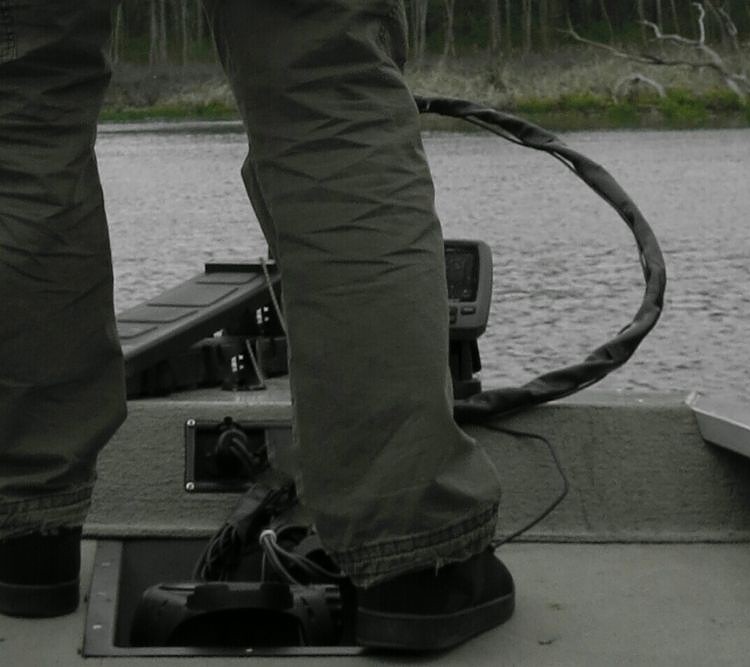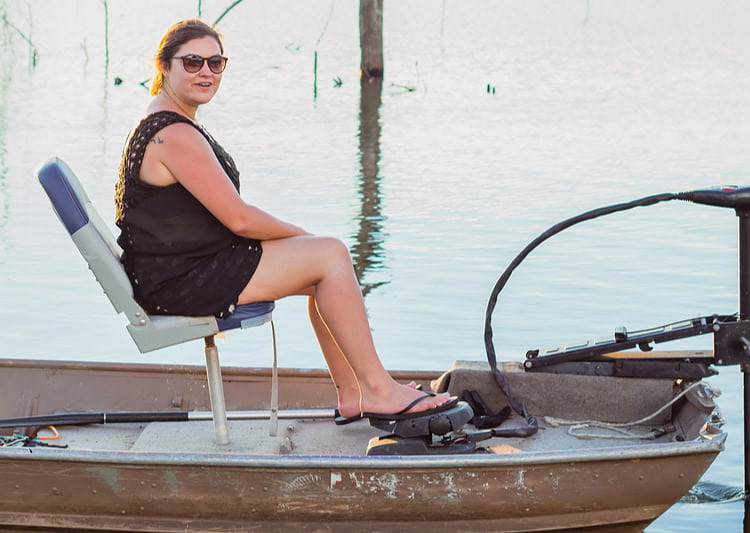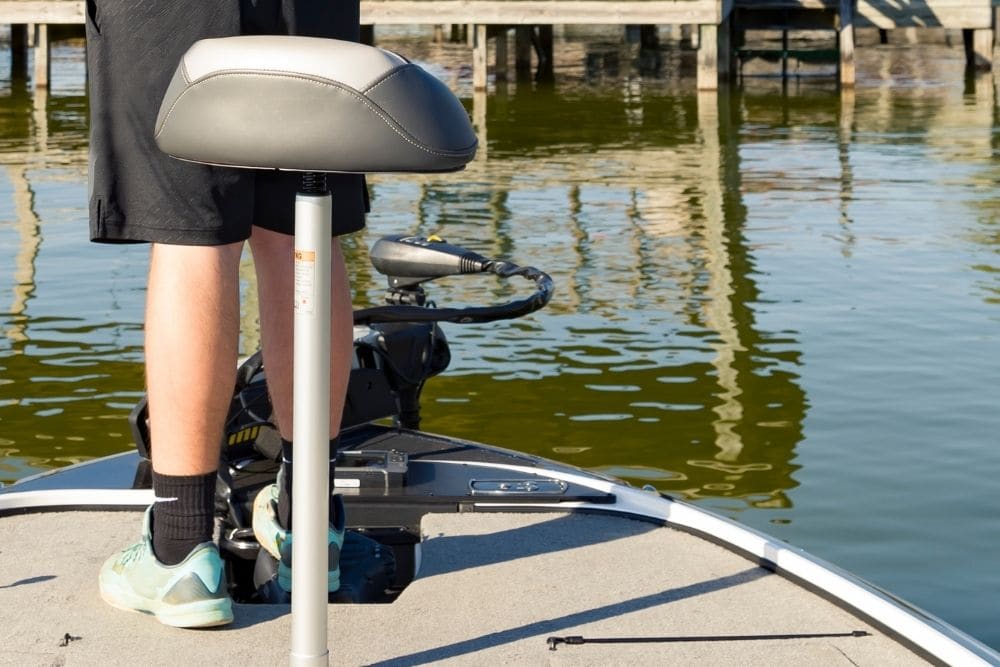Trolling motors are an amazing addition to your boat, especially if you use them more frequently for fishing. They not only simplify the process and experience, but they also offer electronic connectivity.
The reason fishermen like working with trolling motors is because they prevent the boat from drifting along. It can connect to the fish finder, reach the location, and then use GPS settings to keep the boat in place without the need for an anchor.
As good as trolling motors are, however, you need to know how to use them properly to be able to derive any benefit out of them or avoid injury.
Inexperience was reportedly the third primary cause of boating accidents in 2019 in the USA, resulting in 458 accidents. Given how horrible these accidents can be, it’s better to be safe than sorry.
Table of Contents
Guide for Using a Trolling Motor with a Foot Pedal
Moving on to the main topic at hand, let’s explore trolling motors with foot pedals. The main purpose of a foot pedal is navigation. It helps you change the direction of the boat.
The pedal is connected to the trolling motor, and using it will help you choose the speed your boat is moving at and the direction it is headed towards. But how does it work?
How it Works
Before addressing the issues of safety and effectiveness, let’s first understand how electronic equipment works. The foot pedal is connected to the trolling motor on two main fronts:
- Speed
- Direction
For this guide, we are using the Minn Kota Edge trolling motor for reference.

The Speed

A foot pedal has a rotary selection located on one side with multiple numbers, each of which represents a power level. You can rotate the selection and place it at the power level you prefer.
Power 3 gives the boat a decent speed to work with if you are covering a specific distance to reach your destination.
Direction

Pressing on the back or front of the foot pedal will rotate the direction of the motor towards the right or the left side, allowing you to shift the boat’s direction accordingly.
These mechanisms are the most important parts of the foot pedal and the ones you will need to keep in mind extensively.
How to Use it Efficiently and Safely
Now that you know the main functions and controls of a foot pedal, there are a few tips to increase the efficiency and safety of their usage.
1. Switch between MOM and CON Options Properly

There are three main switches on a foot pedal.
MOM – Allows you to alternate between keeping the motor turned on and off on a need basis without having to switch it off.
CON – Allows you to run the motor continuously. Usually best when you have to cover a longer distance without stopping in between.
OFF – Switches off the motor.
2. Turn Off the Power Button before Connecting the Motor to the Pedal
One of the most important safety measures to keep in mind is to turn the foot pedal switch off before connecting the trolling motor’s wire to it.
If the switch is not turned off, the trolling motor will start working immediately and is likely to put you at risk or damage the boat.
Connect the boat, place the trolling motor at its designated spot and then turn the switch on.
3. Practice Changing Direction at Slower Speeds

Never try to get into using a foot pedal at higher speeds. You are likely to lose your balance, fall, and get injured. Depending on how badly you get injured, you can be in danger if you are on your own.
Make sure you start off changing directions at slower speeds so you can get the hang of the movements and balance. When you are well prepared, you can switch to a faster speed.
4. Only Switch to Higher Power/Speed in Rare Cases
While you will have the option to switch to faster speeds and greater power, choose a more moderate option to go with.
The higher speed will only add more risk and reduce the degree of reactive control you have against any problem that may pop up along the way. This is especially relevant because foot pedal steering does not give immediate responses.
There may be less traffic in the water on average, but you are still at risk of getting into accidents due to overspeeding.
5. Reduce the Clutter

Having a foot pedal means the clutter of wires around the boat. If you do not organize them, you are at risk of tripping.
Therefore, find a way to avoid making a mess and keep the wires on the side.
Just in case you want to have a visual reference to get a clear picture of this guide, check out this short video explaining the basic components of a foot pedal and navigation.
This video will point out each of the components we have mentioned in the guide and depict the boat ride’s navigation process.
The most important take from this guide is to be attentive and careful with your usage. Boat rides can also pose the same risks as car rides when done rashly. Safety First!
The Main Types of Trolling Motors
Now that we have covered the guide for using a trolling motor with a foot pedal, let’s address one more detail. If you are opting to get a trolling motor for your boat, you will typically be able to choose between two options.
- Foot-Controlled
- Hand-Controlled
Foot-Controlled

The foot-controlled trolling motor, as mentioned in the details above, is controlled using a foot pedal. It turns the direction of the boat depending on whether you push down on the backside or the front.
Hand-Controlled

Hand-controlled trolling motors essentially work with the same principle as the foot-controlled ones; they help you navigate the boat. However, hand-controlled ones have a lever at their top which you can use to change the direction of the motor to steer yourself in the right direction.
Hand-Controlled vs. Foot-Controlled
While both hand-controlled and foot-controlled trolling motors accomplish the same function, there are a few prominent differences between the two:
|
Foot-Handled Trolling Motors |
Hand-Handled Trolling Motors |
| Works by pressing the foot pedal located anywhere in the boat. | Works by turning the lever connected to the trolling motor directly. |
| It is not restrictive as you have full mobility of hands and can choose where to situate the foot pedal. | It is restrictive because it can only be accessed from the back of the boat and you have to remain seated there to navigate. |
| Has a relatively slow response time, requiring constant vigilance. | Has quick response time as the direction starts changing immediately after you turn the lever. |
| Clutters the boat due to wire from the trolling motor connecting to the pedal. | No clutter since no additional wires are needed. |
| Easy to steer and fish at the same time. | Difficult to steer and fish since you will need to keep your hands ready to turn the lever. |
Both have their pros and cons so it depends on which ones you can work with. Most fishermen prefer the foot pedal because it gives them greater control over their fishing.
Conclusion
Overall, the key to increasing efficiency and safety for trolling motors with a foot pedal involves ample practice, responsible behavior, and minimizing clutter.
We hope this article helped you understand foot-handled trolling motors more, and you will look forward to exploring one.

I created this site to help people – to help you – with your boat problems. Instead of helping one person at a time, I want this website to be the “one-stop-shop” for everyone’s boating concerns. Read more.

